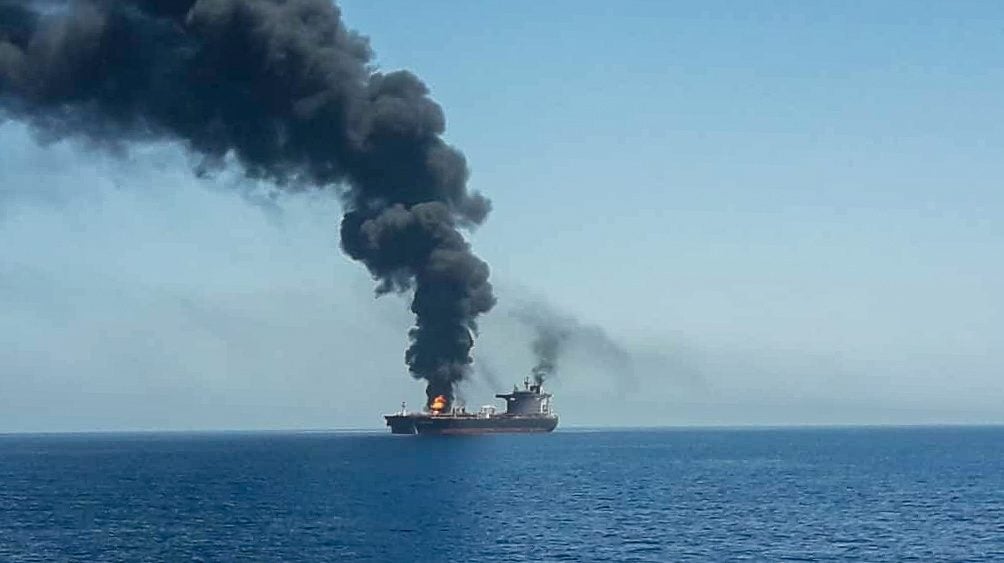Everything we don’t know yet about the Gulf tanker explosions
Two oil tankers caught fire today in the Gulf of Oman, off the Iranian coast. The US navy’s Fifth Fleet, based in Bahrain, said it responded to two distress calls from the tankers, between 6 and 7am local time, over a “reported attack.” The British navy was more circumspect, at a time of heightened tensions between Washington and Tehran, and urged “extreme caution.”


Two oil tankers caught fire today in the Gulf of Oman, off the Iranian coast. The US navy’s Fifth Fleet, based in Bahrain, said it responded to two distress calls from the tankers, between 6 and 7am local time, over a “reported attack.” The British navy was more circumspect, at a time of heightened tensions between Washington and Tehran, and urged “extreme caution.”
The exact source of the fires on the ships remains unknown (paywall), but reports suggest torpedoes, projectiles, and even naval limpet mines (paywall) might be at play.
If it sounds like a convoluted mess, it is.
Here’s what we do know
One of the ships, the Japanese Kokuka Courageous, caught fire early in the morning local time. The president of Kokuko Sangyo, the shipping firm that operates and owns Kokuka Courageous, told reporters in Tokyo that the tanker had been attacked, twice, in three hours. The crew of 21 people then fled the ship on life boats, and were reportedly picked up by a US navy warship.
The second ship, Front Altair, is operated by a Norwegian company. It also caught on fire in the morning, and its crew of 23 were rescued by the Hyundai Dubai vessel, a South Korean freight ship. The crew were later handed over to an Iranian rescue ship and disembarked at a local port.
Today’s incident come a month after an apparent attack on four vessels also in the Persian Gulf. There were no casualties in any of the episodes.
Here’s what we don’t know
It’s still unclear if what exactly happened on the tankers today was an attack. If they were attacks, their source is also unclear. The US believes it is “highly likely” that Iran is to blame for the latest incident, while national security advisor John Bolton also pegged last month’s attacks on Iran, but offered no proof.
Iran denies involvement in both incidents, and foreign minister Javad Zarif said the timing was suspect. “Reported attacks on Japan-related tankers occurred while PM @AbeShinzo was meeting with Ayatollah @khamenei_ir for extensive and friendly talks. Suspicious doesn’t begin to describe what likely transpired this morning.”
Japanese prime minister Shinzo Abe’s historic two-day visit to Iran ended today. It’s the first time a Japanese leader has touched down in the country since the 1979 Islamic revolution. The trip was widely interpreted as a means for Abe, one of the few leaders with close ties to both the US and Iran, to serve as an interlocutor.
The US position on Iran
The Trump administration has grown increasingly hawkish toward Tehran since the US withdrew from the multilateral Iran nuclear accord last year and then ended sanctions waivers for Iranian oil imports in early May. The heightened tension and rhetoric between the two countries may in part be contributing to the confusion.
It’s also unclear what longterm impact this is going to have on the energy sector. At least 30% of the world’s oil that is transported by sea goes through the Strait of Hormuz in the Persian Gulf, near to where today and last month’s incidents happened. Oil prices jumped at least 4.5% on today’s news, and insurance markets now view the route as being at its most dangerous level since 2005.